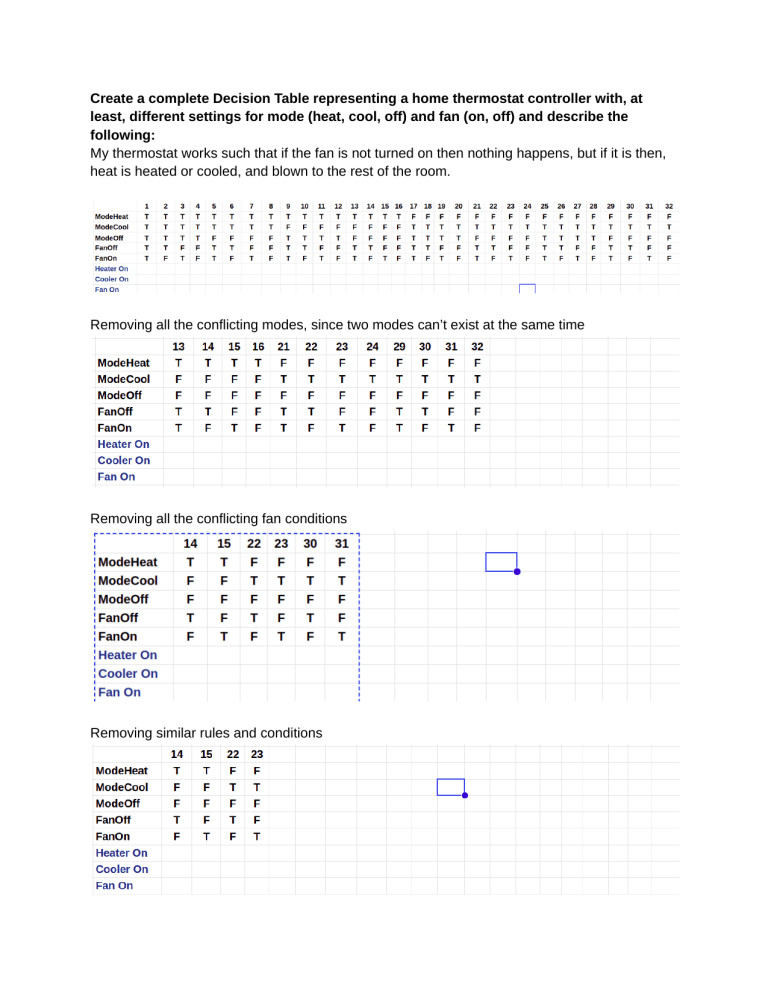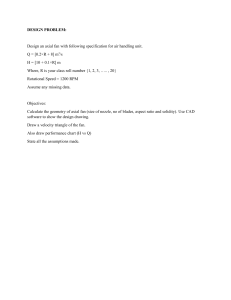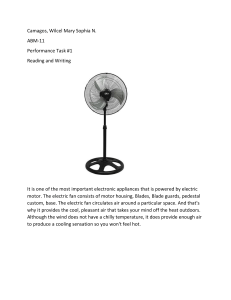
Create a complete Decision Table representing a home thermostat controller with, at least, different settings for mode (heat, cool, off) and fan (on, off) and describe the following: My thermostat works such that if the fan is not turned on then nothing happens, but if it is then, heat is heated or cooled, and blown to the rest of the room. Removing all the conflicting modes, since two modes can’t exist at the same time Removing all the conflicting fan conditions Removing similar rules and conditions Removing inconsistent rules Condensing Fan conditions Condensing mode actions How do you know your decision table is complete? I know that my decision table is complete since there are 5 conditions and each condition has two possibilities, which means that the number of rules will be 32 and my decision table shows the same. How does your Decision Table work? My decision table works by checking the mode, if the mode is heated and the fan is on, then the heater is turned on. If the mode is cool and the fan is on, then the cooler is turned on. Nothing happens when the mode is off or the fan is turned off. What were the benefits and issues specifying the home thermostat controller using a Decision Table? The benefit is that it is easy to construct the first or the complete decision table. Also, removing rules or requirements becomes easy and transparent as you check for inconsistencies. Issues include complexity and the need to know when and how to condense. It was time-consuming creating all the rules and conditions for the decision tree. Also, in the end, I struggled with the fact that the mode off was no longer in the decision tree. How do Decision Tables compare to other methods we have covered? A decision tree is easy to understand and implement as compared to others, however, when it comes to large features, it becomes difficult to implement. Also, it is easy to ensure that all input cases have been considered (input case complete).


